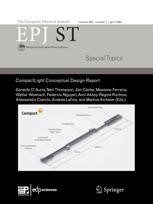The fascinating ways animals navigate
Many animals – from birds to whales to zebras – find their way across great distances using a variety of environmental factors.
New York | Heidelberg, 30 June 2022
 The Arctic Tern migrates an extraordinarily long way – from pole to pole. And while this bird is unique in the distance it traverses, its excellent sense of direction is shared by many other animals that use a variety of environmental factors to optimise their routes. In a new review paper in EPJ ST, Roswitha and Wolfgang Wiltschko from the Goethe-Universität in Frankfurt am Main, Germany, outline how animals use internal compasses to navigate and the mechanisms they are likely to use to determine the direction of their destination. These can be applied when developing effective navigation systems for robots.
The Arctic Tern migrates an extraordinarily long way – from pole to pole. And while this bird is unique in the distance it traverses, its excellent sense of direction is shared by many other animals that use a variety of environmental factors to optimise their routes. In a new review paper in EPJ ST, Roswitha and Wolfgang Wiltschko from the Goethe-Universität in Frankfurt am Main, Germany, outline how animals use internal compasses to navigate and the mechanisms they are likely to use to determine the direction of their destination. These can be applied when developing effective navigation systems for robots.
In the research for their review, the authors found that animals use three main types of internal compasses. Animals are thought to use a magnetic compass, to sense the direction of the Earth’s magnetic field, to take into account the arc of the sun and the time of day in a sun compass, and some, such as nocturnally migrating songbirds, may orient themselves by the pattern of stars as a whole, using a star compass.
In addition, the research suggests that animals use different mechanisms for determining the direction of their destination. Path integration enables some to travel directly home after a winding outward journey, innate programs make it possible for young migrants to travel alone to their species’ wintering area without ever having been led there, and mental maps enable birds such as homing pigeons to find their way home even when released in unfamiliar, distant locations.
The Wiltschkos conclude that animals navigate using magnetic, sun, and star compasses and use three main mechanisms to determine the direction of their destination: path integration, innate programs, and mental maps based on experience. Other researchers have used the knowledge of how desert ants navigate in order to build a robot that uses path integration when a quick return is required.
Reference: Wiltschko, R., Wiltschko, W. Animal navigation: how animals use environmental factors to find their way. Eur. Phys. J. Spec. Top. (2022). https://doi.org/10.1140/epjs/s11734-022-00610-w
Further Information
For more information visit: www.epj.org
Services for Journalists
The full-text of the Editorial is available here.
Contact
Sabine Lehr | Springer | Physics Editorial Department
tel +49-6221-487-8336 | sabine.lehr@springer.com
